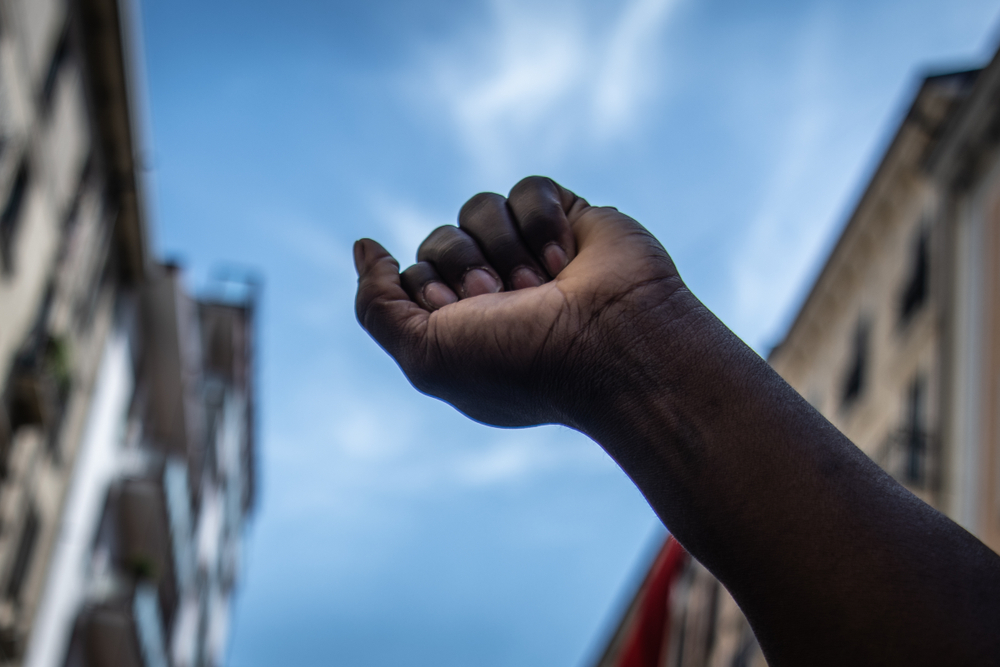
The recent systematic review on involuntary commitment by Barnett et al (2019), blogged here by Ian Cummins, argues that we no longer need to reiterate that people from racialised groups are over-represented in the Mental Health System, but we need to show why.
Although the current paper (Gault et al, 2019) goes wider than involuntary commitment, it takes the view that increased medication adherence would go some way to solving that problem and that understanding lack of adherence is a worthy endeavour. The paper reports the first two phases of a study aimed to increase nursing professionals’ skills in bringing about just this. It aims, further, to be co-produced but adds: “This study makes considerable effort to take a co-production approach but may not meet some of the standards required for “true” co-production” (p2). I shall argue later that this is a gigantic understatement.
In the ‘Rationale’, the authors make some statements that are widespread, but completely lacking an evidence base: that BAME communities have higher rates of homicide and suicide, especially when not taking their medication. They completely fail to mention confounders, which since the McArthur studies of the 1990s, have been shown to account for these elevated statistics, not ethnic status or medication adherence as such. Confounders include use of alcohol and street drugs, poverty and homelessness. And there is, of course, mention of ‘cultural competence’ to which we will, of necessity, return. All these are background assumptions stated before any ‘co-production’ takes place.
It’s worth noting that the paper (Gault et al, 2019) is available open access, so you can refer to it as you read this blog if you wish.

Where’s the evidence that BAME communities have higher rates of homicide and suicide? What about confounders? (e.g. alcohol and street drugs, poverty and homelessness).
Methods
The methods in this study are qualitative: Phase 1 consists of individual interviews and Phase 2 of a ‘consensus workshop’. Although demographics are given for 15 participants, it appears that the same 5 individuals agreed to be both interviewed and participate in the consensus workshop. There were three service users and two carers. The authors state: “Although the quantity of participants is not the major concern in qualitative work, it is necessary to continue sampling until saturation is established”(p.4).
We learn that the service users were recruited through posters in a Recovery College and we are also informed that BAME communities can be ‘hard to reach’. Exclusion criteria included people who were ‘too distressed’.
Having used a concept from thematic analysis – ‘saturation’ – the authors then describe their method as ‘grounded theory’ following the model of Charmaz (Charmaz, 2014). There was line by line coding, allocation of memos and the final generation of ‘explanatory categories’.
Methods and Coproduction
The topic guide used was based on “best practice from the Royal College of Pharmacologists” (p.5). Interviews were conducted by the research team and “considered with SU members of the Recovery College” (p.5). This was also true of the analysis, but no details of the form or extent of this were given.
In Phase two the Service Users from the Recovery College seemed to have more of a role. Using a nominal group technique, participants reflected on the interviews and engaged in debate. The participants “challenged and changed” researchers ideas about the target audience.
Results
The final explanatory category is Complexity of Medication Experience. However, that complexity reduces to strong objections to side effects (given as ‘open codes’ but actually quotations) and rather more equivocal references to benefits (also quotations). There are four memos given, one of which states “Where health care professionals worked with them, they could find medication solutions” (all p.6). However, none of the quotations supports this assertion.
Later more quotations are given but the memo just cited then becomes the major organising theme of the paper. It is ‘The Communication Gap’. There are three main issues here. First, it is a question of ‘speaking a different language’. Second, there was an inferred feeling amongst participants that they had to behave ‘normally’, or ‘be quiet’ in order to get a decent service and not be ‘loud’ or ‘be themselves’ as this was interpreted as illness by medical professionals.
Third, it is asserted, and at length, that Mental Health Professionals misunderstand ‘BAME Family Culture’. The first three quotations are interesting as they put the onus on the professionals for misunderstandings: “Doctors come from a place of privilege….how can they judge what is appropriate behaviour for me” (SU p.7). However, thereafter, ‘BAME Family Culture’ is unremittingly represented as stigmatising, thinking the person is making up voices, that the distress is punishment for previous bad behaviour or the family locking the person up.
The results from the consensus workshop are reduced to them agreeing that all categories should be subsumed under ‘Belief that professionals misunderstand BAME family culture’. In addition, participants challenged the intended mode of training mental health professionals (in vivo training) and also the target audience (student rather than established nurses).

“Doctors come from a place of privilege….how can they judge what is appropriate behaviour for me”
Discussion (in the paper)
Interestingly, the Discussion contains additional quotes and almost without exception they point to ‘the bigger picture’; not just family, but class, background, speech getting ‘lost in translation’ and, importantly, that “Health care professionals would need to feel how it is for service user and carer”. The text focuses on the use of medication to control, and that professionals had little in common with service users, but always interpreted in terms of the ‘communication gap’ understood as professionals not understanding ‘BAME families and communities’ where people suffer a ‘triple jeopardy in terms of stigma: self, family and community.
Discussion
As both a service user and a researcher, I, to be quite honest, don’t know where to start. So let’s start with the empirical research. If you interview 5 people and then use (I mean that literally) the same people in a consensus workshop, then grounded theory is impossible. Theoretical sampling can never be complete with 5 persons and the process of grounded theory requires data from a maximum heterogeneity sample (even with ‘ethnicity’ as the main inclusion criterion). This can never be achieved with 5 persons. So, in my opinion, the only suitable means of qualitative analysis for such a small sample is Interpersonal Phenomenological Analysis (IPA).
But there is an additional issue of how participants were recruited in the first place: from a Recovery College. ‘Recovery Colleges’, in the main, are a form of psycho-education and how to live well even with symptoms (the original user-led definition of recovery). Recovery Colleges also accept mainstream mental health services and encourage use of medication although not only that. In addition, potential participants were excluded if they were ‘too distressed’. So it is quite possible that these participants came to the study with an already formed perspective and therefore were an homogenous group. Hence, it became possible to make the analysis look like grounded theory as there was little disagreement.
Now I move to the position of ‘survivor researcher’ and look at aspects of this study through a double lens. No-one would dispute that a kindly, compassionate, understanding encounter is better than a cruel and cold one. Hence the concluding emphasis on ‘therapeutic alliance’. But interpersonal communication hardships for racialised groups are but symptoms of structural factors ranging all the way from structural racism itself through poverty, exclusion from school, engagement with the criminal justice system etc. A ‘therapeutic alliance’ that is genuine is all but impossible when it is shot through with all the power dynamics that flow from these experiences. And the interesting thing is that the quotes on p.9 show that the participants themselves understand this: they refer to history, class and culture. Yet the authors seem unable to see their understanding and so persist in talking about communication gaps and misunderstanding of BAME families (whom they paint in the most toxic colours). So I do not think that improving communication is the answer: social change is, including at the level of communities themselves who harbour much resilience at a community level as well as ‘stigma’.

Interpersonal communication hardships for racialised groups are but symptoms of structural factors ranging all the way from structural racism itself through poverty, exclusion from school, engagement with the criminal justice system etc. A ‘therapeutic alliance’ that is genuine is all but impossible when it is shot through with all the power dynamics that flow from these experiences.
Finally, ‘coproduction’ which links to the above points. The authors themselves admit that they made some failings. But how can a project be ‘coproduced’ when it starts from the assumption that ‘medication is a good thing’. It is there in the title and is the dominant thread throughout, even when participants themselves complain at length about side-effects and ‘being poisoned’. And then situate this in the bigger picture whilst the authors continue to assert that better communication can ameliorate the unwanted effects of drugs (?). I am no pill-shamer and there is a place for medication in the short term and if people find it helpful that is fine. But Robin Murray and colleagues (Murray, Quattrone et al. 2016) have gone through the evidence at great length and conclude that maintenance medication can be dangerous as it changes neuronal structure. So what looks like ‘relapse’ is actually ‘withdrawal’ as the brain is a homeostatic system and dropping the level of dopaminergic drugs leads to an upregulation of that neurotransmitter. And if I may insert a personal reference, I know this from experience: it took me a year to come off olanzapine for this very reason. So, to return to the paper, the underlying assumption that subtends this paper is not uncontroversial and is a wobbly basis for ‘coproduction’.
Jayasree Kalathil and I have argued that in the case of mad people and the racialised mad in particular, ‘coproduction’ is not possible because the dominant paradigm (stemming from European thought over 300 years) positions both the mad and the racialised mad as inferior, non-rational, individual subjects (Rose and Kalathil 2019). Which, for me, explains why the participants know what is going on better than the authors (see Table 5, p.9). They know the professionals cannot feel their pain, that they are privileged, mostly white, and do not understand the social factors which underpin their distress. To put it bluntly, this paper submits its participants to ‘epistemic injustice’ (Fricker 2007) and is underpinned by Whiteness.
In case that is too strong, it should be noted that psychiatry is a political discipline and practice, and holds great sway over the lives of some and especially racialised groups. Gault et al made an attempt at coproduction and the participants challenged both their mode of training (recommending in vivo examples) and the target of the training (student nurses rather than established ones). These are good ideas. The question is the content of the curriculum.

In the case of mad people and the racialised mad in particular, ‘coproduction’ is not possible, because the dominant paradigm (stemming from European thought over 300 years) positions both the mad and the racialised mad as inferior, non-rational, individual subjects.
Clinical implications
- For the authors, improved communication skills amongst mental health professionals will lead to greater medication adherence and a better medication experience.
- For the writer of this blog, the implications are different. Clinicians should be cautious in prescribing medication, particularly maintenance medication, and should listen attentively (and outside the context of their training) when service users describe the sometimes very awful unwanted effects they experience.
- Again for the author of this blog, it would be preferable if psychiatrists became public health doctors rather than diagnosticians and prescribers and did not necessarily lead the MDT (multidisciplinary team). Nurses should receive training in the social determinants of distress, and in detail.

Clinicians should be cautious in prescribing medication, particularly maintenance medication, and should listen attentively (and outside the context of their training) when service users describe the sometimes very awful unwanted effects they experience.
Conflict of interest
The writer of this blog (Professor Diana Rose) works with one of the authors of this paper (Professor Mary Chambers). I sincerely hope she does not take this as a personal attack.
Links
Primary paper
Gault I, Pelle J, Chambers M. (2019) Co-production for service improvement: Developing a training programme for mental health professionals to enhance medication adherence in Black, Asian and Minority Ethnic Service Users. Health Expect. 2019 Jun 27. doi: 10.1111/hex.12936. [Epub ahead of print]
Other references
Barnett, P., et al. (2019). “Ethnic variations in compulsory detention under the Mental Health Act: a systematic review and meta-analysis of international data.” The Lancet Psychiatry 6(4): 305-317.
Charmaz, K. (2014). Constructing grounded theory. New York, London, Sage.
Fricker, M. (2007). Epistemic injustice: Power and the ethics of knowing. Oxford, Oxford University Press.
Murray, R. M., et al. (2016). “Should psychiatrists be more cautious about the long-term prophylactic use of antipsychotics?” 209(5): 361-365.
Rose, D. and J. J. Kalathil (2019). “Power, Privilege and Knowledge: the Untenable Promise of Co-production in Mental ‘Health’.” Frontiers in Sociology 4: 57.
Photo credits
- Photo by Gavin Allanwood on Unsplash
